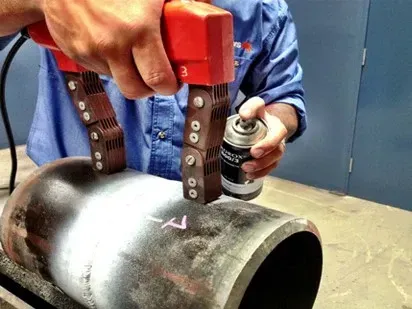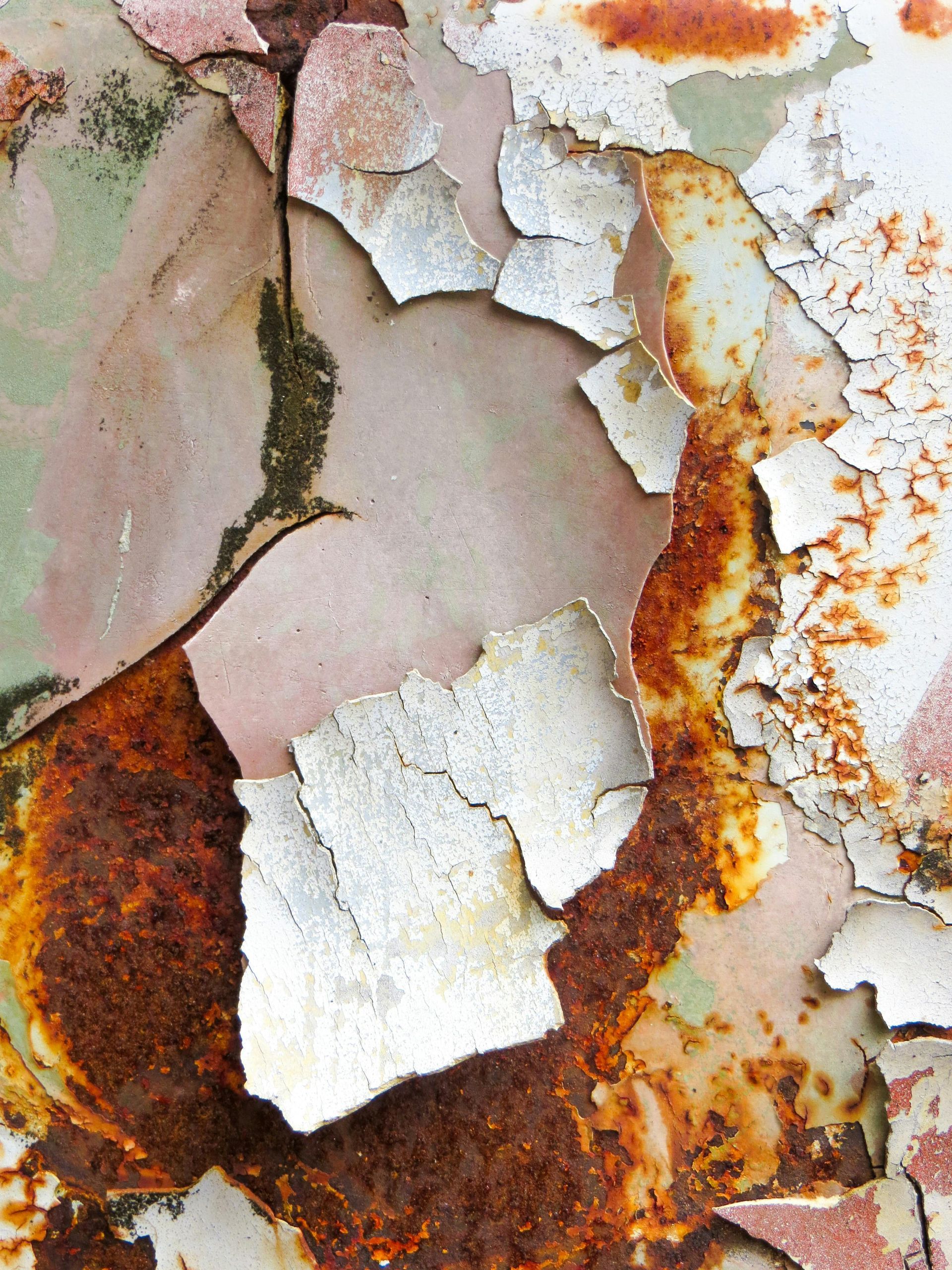Nondestructive Testing

Understanding Nondestructive Testing: A Complete Guide for Industry Professionals
In a world where safety, reliability, and efficiency are paramount, ensuring the integrity of structures and equipment is essential. Nondestructive testing – or NDT – plays a vital role in achieving this, offering a way to assess the condition of materials and components without causing damage or disruption.
Whether you’re in construction, manufacturing, energy, or aerospace, Nondestructive testing is one of the most cost-effective and reliable ways to detect defects, validate fabrication, and maintain the ongoing safety of your assets.
What is Nondestructive Testing?
Nondestructive Testing refers to a broad range of inspection techniques used to evaluate the physical and structural condition of an object without altering or damaging it. Unlike destructive testing methods, which require a sample to be broken or otherwise compromised, NDT allows for inspection and analysis while keeping components intact and functional.
Because of this, Nondestructive Testing is widely used across industries where safety, compliance, and operational uptime are priorities.
Common Nondestructive Testing Methods (with Equipment)
Several established methods fall under the umbrella of Nondestructive Testing, each suited to detecting specific types of flaws or assessing certain materials. These methods are also standardised under global frameworks such as ISO 9712:2021, which certifies competence in NDT personnel.
Visual Testing (VT)
Visual Testing is the simplest and most widely used method, relying on careful visual examination—either directly or with tools—to detect surface anomalies such as cracks, corrosion, misalignments, or missing components.
Equipment used:
• High-intensity torches or inspection lamps
• Borescopes or endoscopes
• Mirrors and magnifying glasses
• Drones for elevated or difficult-to-access assets
• Digital cameras and image documentation tools
Ultrasonic Testing (UT)
Ultrasonic Testing uses high-frequency sound waves to detect internal flaws or measure thickness. It’s ideal for locating voids, cracks, or laminations inside metals or composites.
Equipment used:
• Ultrasonic flaw detectors
• Probes/transducers (contact or immersion)
• Couplants (gel or liquid mediums)
• Digital thickness gauges
• Data loggers for mapping and trend analysis
Radiographic Testing (RT)
Radiographic Testing uses X-rays or gamma rays to inspect the internal structure of a component. It produces images that show internal discontinuities without disassembly.
Equipment used:
• X-ray generators or gamma-ray sources (e.g. Iridium-192)
• Radiographic film or digital imaging sensors
• Radiation safety equipment and shielding
• Personal dosimeters
Magnetic Particle Inspection (MPI)
Magnetic Particle Testing is suitable for detecting surface and near-surface flaws in ferrous materials. When magnetised, defects disrupt the magnetic field and attract fine magnetic particles, making flaws visible. At Dangle, we frequently use Fluxo for MPI.
Equipment used:
• Yoke magnets or prods
• Fluorescent or visible magnetic powders
• Black lights for enhanced visibility
• Demagnetisation tools
This method is frequently used in high-stress components such as crane hooks, lifting gear and structural welds —common on projects involving rope access and rigging.
Liquid Penetrant Testing (PT)
Liquid Penetrant Testing identifies surface-breaking defects in non-porous materials. A dye is applied, allowed to penetrate, and drawn out with a developer to highlight flaws, for this reason this type of testing can also be known as Dye Penetrant Testing.
Equipment used:
• Penetrant (visible or fluorescent)
• Cleaner/remover
• Developer (dry powder or liquid)
• UV lamps for fluorescent testing
• Lint-free wipes for surface prep
Eddy Current Testing (ET)
Eddy Current Testing detects flaws in conductive materials through electromagnetic induction. It is sensitive to small surface cracks, especially in tubing and aerospace applications.
Equipment used:
• Eddy current flaw detectors
• Pencil or encircling probes
• Calibration blocks
• Conductivity meters
Ideal for high-frequency inspections of metal surfaces, it is also applicable in aerospace structural evaluations particularly for fatigue-prone parts.
Benefits of Nondestructive Testing
The non-invasive nature of Nondestructive Testing provides both safety and economic benefits, while supporting compliance with industry standards like those enforced by the UK Health and Safety Executive (HSE)
Enhanced Safety and Reliability
Routine Nondestructive Testing identifies wear, fatigue, and defects before they become critical—preventing injuries, equipment failures, and environmental damage.
Minimal Disruption to Operations
Because components remain intact, inspections can be done in-service—without removing or dismantling parts. This makes Nondestructive testing ideal for power plants, live process lines, or hard-to-access infrastructure.
Reduced Maintenance Costs
Preventive maintenance using Nondestructive Testing helps organisations identify minor issues before they escalate. This proactive approach significantly reduces repair costs and downtime.
Compliance and Certification
Industries regulated by law (e.g. oil & gas, nuclear, and aviation) require ongoing compliance with standards such as ISO and EN codes. Nondestructive Testing supports this through documented, repeatable evaluations.
Extended Equipment Life
By enabling timely repair decisions, Nondestructive Testing extends the lifespan of expensive assets like pressure vessels, turbines, and critical pipelines—maximising ROI.
Data-Driven Insights
Modern Nondestructive Testing tools include data logging, digital mapping, and reporting. This supports condition-based maintenance (CBM) and Customer relationship management (CRM) strategies and improves asset management long-term.
Applications of Nondestructive Testing Across Industries
Nondestructive Testing is indispensable in nearly every industry that relies on physical infrastructure or high-performance systems:
Aerospace
In the aerospace industry, Nondestructive testing is essential for maintaining the highest levels of safety, performance, and regulatory compliance. Aircraft components are subject to extreme operating conditions—including high stress, vibration, and temperature variation—which makes early detection of flaws critical to avoid structural failure.
Oil and Gas
In the oil and gas industry, Nondestructive Testing is indispensable for ensuring the safety and integrity of infrastructure exposed to extreme pressures, temperatures, and corrosive environments. From upstream exploration to downstream refining, the sector relies heavily on accurate inspection data to prevent catastrophic failures and meet strict safety regulations.
Construction and Infrastructure
In the construction and civil engineering sectors, Nondestructive Testing is a cornerstone of quality assurance and structural integrity. As buildings, bridges, tunnels, and roadways are expected to perform safely over decades, early detection of defects during construction and ongoing condition monitoring is essential.
Power Generation
In the power generation industry—where reliability, efficiency, and safety are critical—Nondestructive Testing plays a vital role in both preventive maintenance and statutory inspection regimes. From nuclear reactors to wind turbines and fossil-fuel stations, power infrastructure must operate under continuous mechanical, thermal, and environmental stress, making thorough, non-invasive inspection essential.
Marine and Offshore
The marine and offshore industries operate in some of the most demanding and corrosive environments on the planet. Constant exposure to saltwater, high pressures, and mechanical stress puts critical infrastructure at risk of degradation. Nondestructive Testing is essential for maintaining the structural integrity and operational safety of vessels, subsea systems, and offshore platforms.
Manufacturing and Heavy Industry
In manufacturing and heavy industry, precision, reliability, and compliance are fundamental. Nondestructive Testing plays a crucial role in quality control, ensuring that components and assemblies meet both customer specifications and regulatory requirements before being put into service.
Whether producing machinery, pressure vessels, structural components, or high-performance parts, NDT helps detect defects early in the production cycle—reducing waste, improving safety, and protecting reputation.
Rope Access and Nondestructive Testing: A Modern Solution
When inspections are needed in hard-to-reach or hazardous environments, rope access techniques enable technicians to perform Nondestructive Testing safely, efficiently, and at lower cost.
Rather than erecting expensive scaffolding or deploying aerial work platforms, rope access offers a flexible alternative that:
• Minimises disruption to operations
• Reduces access time
• Improves safety in complex environments
Dangle integrates IRATA-certified rope access with advanced NDT for telecoms, wind energy, industrial plants, and offshore sectors.
Why Choose Dangle’s Academy?
Here at Dangle, we pride ourselves on offering a wide range of professional and comprehensive inspection, access, coatings, and composite (IACC) industrial services and training courses to cater to the needs of both the private and public sectors. Our dedication to providing high-quality work at height solutions and training has helped us establish a strong reputation in the industry.
With a team of highly skilled and experienced professionals, we are committed to delivering exceptional results that not only meet but exceed our clients' expectations. Our on-site working at height services are designed to minimise maintenance costs in the long and short-term, allowing our clients to save on valuable resources.
Located in Belfast, Northern Ireland, our headquarters serve as the centre of our operations across Ireland. However, we also have a Dangle office based in Scotland, ensuring that we can extend our services to a wider clientele across the United Kingdom. No matter where you are located, our team is always ready to assist you with your industrial maintenance or training needs.
If you would like to learn more about how our dedicated team can help you, we encourage you to get in touch with us today. Our friendly and professional staff are always available to provide you with the information and support you require.


